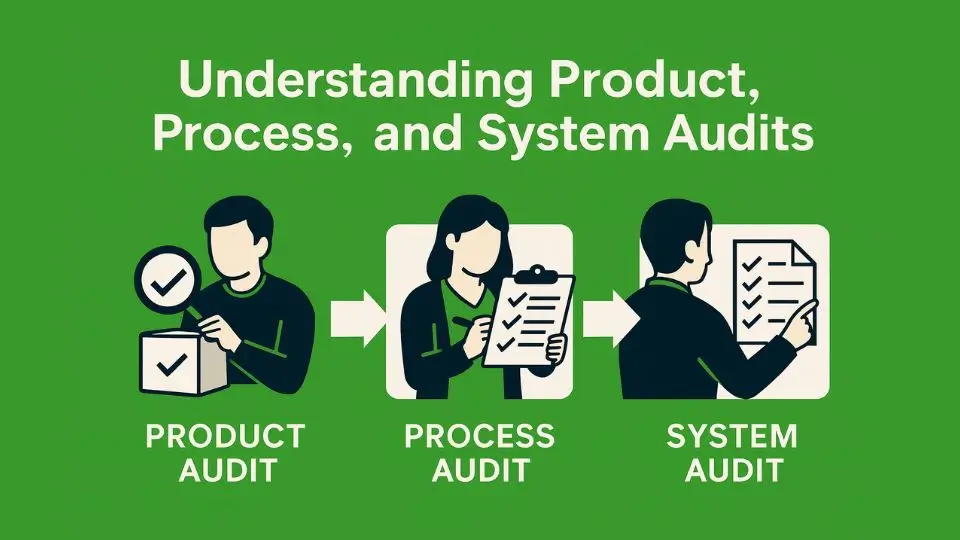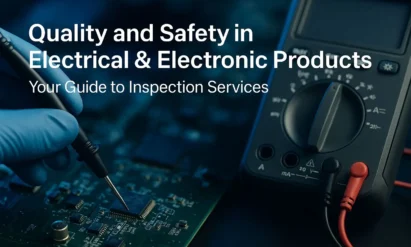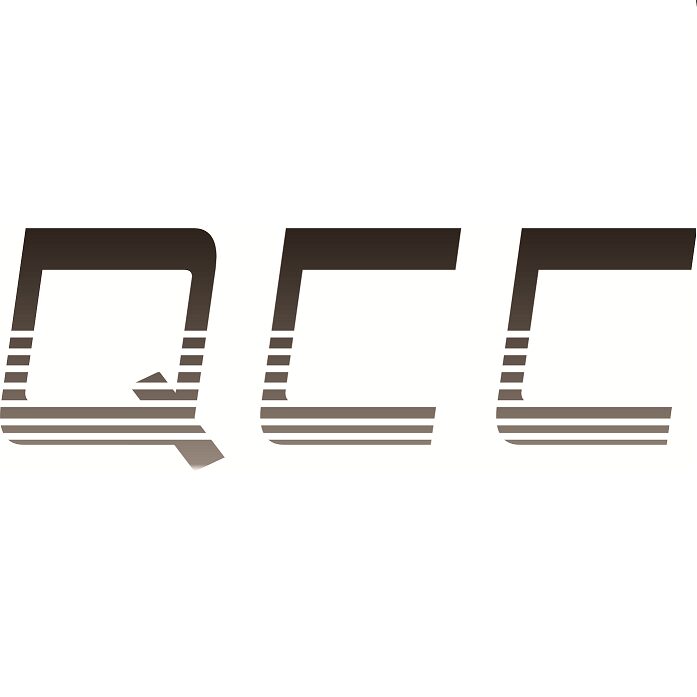Product, Process, and System Audits: Key Differences and Business Value
Sep 04,2025

In today’s competitive market, companies can’t leave quality to chance. Audits bring the structure needed to make sure processes run smoothly, systems stay compliant, and products meet customer expectations.
There are three key types of quality audits: Product, Process, and System Audits. While they’re all connected, each serves a unique purpose. By understanding the differences and knowing when to use each, companies can improve their operations and deliver consistent, high-quality results.
What Is a Product, Process, and System Audit?
| Metric | Process Audit | Product Audit | System Audit |
| Objective | Verify process adherence | Check product conformity | Assess quality management system effectiveness |
| Focus Area | Procedures, operations | Final product features | Policies, documentation, compliance |
| Scope | Entire workflow | Finished goods | Entire management system |
| Timing | During production | After production | Periodic or certification-driven |
| Frequency | Periodic or risk-based | Batch-wise or complaint-driven | Scheduled or regulatory requirement |
| Conducted By | QA or internal auditors | QC inspectors or engineers | Internal or external auditors |
A Product Audit evaluates the finished goods after production. It focuses on whether the final output meets design specifications, customer requirements, and industry regulations. In practice, this means checking if the product functions as intended, if it has the right dimensions, and if it looks and performs as promised. A product audit is often performed on a batch basis or triggered by customer complaints, and it directly safeguards brand reputation.
A Process Audit examines how things are done during production. Rather than waiting until a product is completed, this type of audit dives into the workflow while it is still in progress. It looks at whether procedures are followed, whether operators are using the right equipment, and whether the sequence of steps ensures consistent quality. The goal is not only to spot non-conformities but also to identify inefficiencies or bottlenecks that may be adding hidden costs.
A System Audit takes a broader perspective. Instead of focusing on a single product or production line, it assesses the effectiveness of the entire quality management system. It reviews company policies, documentation, and organizational controls, ensuring they align with standards such as ISO 9001. System audits are usually scheduled as part of certification or compliance requirements, and they play a central role in confirming that the business is structured for long-term success.
Comparing Product, Process, and System Audits
While these three audit types work together, each serves a distinct purpose. Product audits, conducted after production, ensure the final product meets customer and regulatory standards.
Process audits, done during production, focus on procedure adherence and identify potential issues before they impact the final product. System audits take a broader approach, assessing whether the organization’s overall quality management system is effective and sustainable.
In simple terms: A product audit asks, “Does the product meet the requirements?” A process audit asks, “Are we following the right steps for consistent quality?” A system audit looks at the big picture: “Is the quality management system solid and compliant?”
Benefits of Conducting These Audits
Carrying out audits consistently brings multiple benefits. A product audit reduces the risk of defective goods reaching customers, which minimizes returns and strengthens trust in the brand.
A process audit helps organizations uncover inefficiencies, reduce waste, and improve productivity by making sure every stage of production is under control.
A system audit ensures that policies and management structures are aligned with regulations and industry benchmarks, which protects the company from compliance risks while also demonstrating credibility to stakeholders.
Taken together, these audits provide a powerful framework for continuous improvement. Businesses that embed them into their operations not only reduce costs and avoid disruptions but also create a culture of accountability and excellence.
When Should You Conduct Them?
Product audits are most useful at the end of the production cycle, particularly when releasing goods to market or when a customer raises concerns about product quality. Process audits are best conducted on a regular or risk-based schedule, especially if recurring issues are detected on the shop floor.
System audits should be performed periodically, often once or twice a year, as part of certification processes or internal compliance reviews. Each type has its timing, and combining them ensures that both the tactical and strategic aspects of quality are covered.
How to Conduct an Effective Audit?
The success of any audit begins with preparation. The scope must be clearly defined, whether it involves a single product line, a specific process, or the entire management system.
Skilled auditors with the right expertise should be assigned, and they must rely on accurate data, including design specifications, process documents, and management policies.
During the audit, information is gathered through observations, document reviews, and interviews. Once completed, findings should be analyzed carefully to identify areas that require corrective action. The final step—implementing improvements—is what turns an audit from a compliance exercise into a genuine driver of business value.
Tools That Support Audit Effectiveness
Effective audits depend on strong tools and resources. Checklists provide structure and consistency, while audit management software makes it easier to track findings, assign corrective actions, and generate reports.
For product audits, specialized inspection instruments may be necessary to measure dimensions or detect hidden defects.
For system audits, a well-organized document management platform helps ensure that policies and records are accessible and up to date. These tools don’t replace auditors’ judgment, but they significantly enhance efficiency and reliability.
Conclusion
Product, Process, and System Audits each play a crucial role in quality management. A product audit ensures goods meet their intended purpose, a process audit keeps operations on track, and a system audit verifies the organization follows recognized standards.
When used together, they create a comprehensive quality approach that boosts efficiency, minimizes risk, and builds customer trust.
For companies aiming to compete globally, embracing these audits is no longer optional—it’s key to achieving operational excellence and long-term growth.
--- END ---
Products
Get A Free Quote
Related Blogs
QCC SAMPLE REPORT
For sample reports or custom checklists, please contact us – we're here to assist you.


 November 28,2025
November 28,2025

